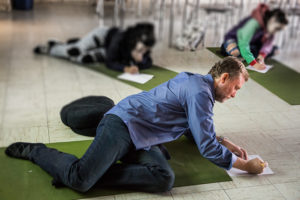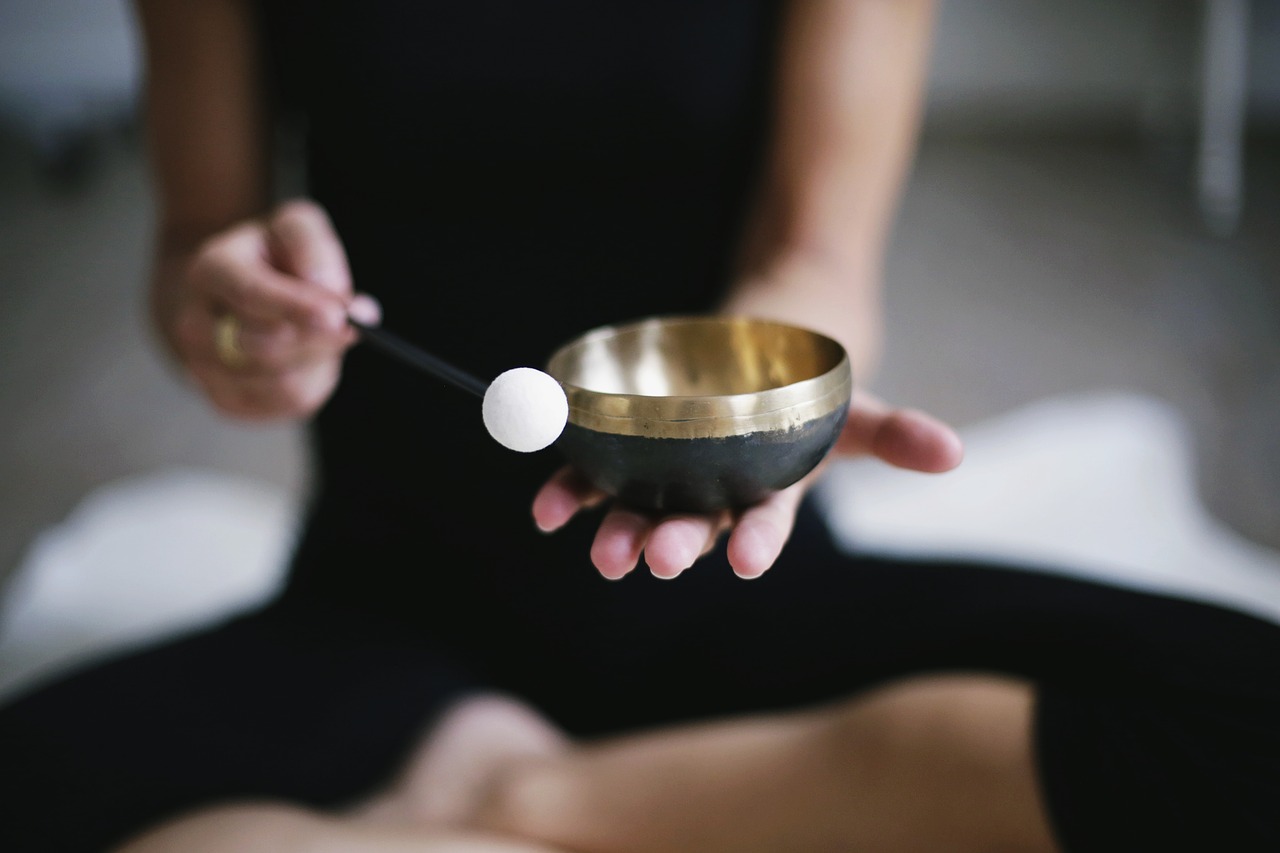If you could summarize the point of mindfulness in a single word, what would that word be? Peace? Clarity? Happiness? Mine would be Learning… because all of the other qualities depend on our ability to clearly comprehend what’s happening in each moment. But, mindfulness is no ordinary kind of learning.
It deeply discerns the truth of our experience, and the state of our mind, body and feelings. By seeing them directly and clearly, this insight enables us to understand the world, and it enables us to make better choices. Two thousand years ago, Socrates said “Know Thyself”, but he never said how. Mindfulness is a technology to do exactly that. And, nobody benefits more than kids.
Years ago, a health scare motivated my decision to leave a creative career, working for Comedy Central, in order to become a NYC teacher. I thought it would lower my stress. Wanna guess how that worked out? The early days were difficult. I used to say that working for Comedy Central was funny, but public education is hilarious! And it was… for all the wrong reasons.
I was recruited to create a real-world marketing curriculum for middle school students in the inner city of Brooklyn. Yet, I was the one who received an education. I saw disadvantaged kids trying their best under breakneck pressure to perform on high stakes tests they felt had little relevance to their lives. And, I saw them acting out in ways that were alarming and clearly reflecting the disconnect.
Teachers were chronically scrambling to meet performance benchmarks that shifted with political winds. Most felt helpless, even vilified, for never doing enough… no matter what they did or how hard they worked. The kids could feel it too. Administrators felt like they were burning out trying to keep impossible hours, answering to too many bureaucrats and wearing more hats than any person could ever reasonably handle. This cocktail stressed everyone at levels that didn’t seem healthy, sustainable or sane. It sure didn’t seem optimal for learning, and the stress was too much for me.
The following year, I transferred to Food and Finance High School, a public High School in Manhattan that also provides world class culinary training for mostly inner-city kids. It was a better environment. Yet, it was far from perfect. A seed was planted that something major needed to shift in public education. But what?
Eventually, the answer appeared in a chance encounter with a politician on a meditation retreat who was beginning to use his voice to publicize mindfulness at a time when it seemed politically suicidal to do so. He also appeared to be working very hard for his own growth. Years later, Congressman Tim Ryan would write “I believe I would be derelict in my duty as a US congressman if I didn’t do my part to make mindfulness accessible to as many people as possible in our nation.” Those words challenged and even shamed me a little. Wouldn’t I also be derelict as an educator if I didn’t share the profound benefits of mindfulness, the same ones that had transformed my own life, with the kids I was entrusted to serve? The answer was right beneath my nose.
I soon began developing a pilot mindfulness program for 17 high school students of various ages, twice a week for four months. I called my program Mindful Fitness. Together, my students and I would explore a radical new interpretation of learning. In truth, for most of the kids, it was an excuse to hang-out with their friends after school, on the days they actually showed up, but they followed my instructions when they did. Together, we meditated, practiced mindful movement and body scans, while learning the basics of neuroscience. And, we began employing potent strategies for dealing with stress in the 21st century.
I found it cathartic and completely euphoric! Many of the kids said they did too. Over time, a support network of open sharing in the room organized itself, that was real, raw and unexpected… with little top down authority coming from me. Except for days when the silliness was too much. Through it all, my students revealed their humanity to me and each other, in ways that had never been apparent in my English classroom. Vulnerable. Honest. Brave. And, without a hint of BS – or cringy, new-age softness. These were New York City kids after all! They understood suffering.
During the school day, some began pulling me aside to share personal problems they were having. This was a first. Others reported family dynamics changing simply because they were changing. Solviany, a 10th grader, believed her relationship with her mother had improved because she could now see that her Mom had too much on her plate. Somehow, she had never looked before. Jenaiya, a 12th grader, was graduating high school on honor roll for the first time, and had never earned higher than mid-seventies.
To quantify the results for my own understanding, I informally administered a behavioral assessment exam before and after the course in concert with the school psychologist. Across the board, kids showed a 9.5% ability to improve focus. Among the ones who initially scored as at-risk, their improvement was 18.5 percent. These were the kids who had trouble sitting still at a desk. One kind but emotionally volatile girl named Noelia, improved over 50%! Her result was not typical, but proved to me the power of mindfulness to change one human life.
If nothing else, she alone was worth the effort. Teachers have been yelling at kids forever to “Pay Attention!”, but no one teaches them how. I knew mindfulness was not a silver bullet, but it was a start. Based on these results, our school’s principal allowed me the following year to create a semester long, curriculum and teach mindfulness inside the school-day, five days a week.
Six years later, it was and remains one of the few accredited mindfulness classes in a public high school, and the results haven’t slowed. Hundreds of students have taken Mindful Fitness, and many have returned long after graduation to share that mindfulness saved them during their harrowing first years of college, or a break-up, or a family divorce. This year, one of my students, an acutely bright girl named Jaylin, survived a school shooting before transferring to our school. She had played on a sports team with one of the victims. Jaylin once shared in class that she sometimes has difficulty walking to school, and sits on the roadside as though gravity is pushing her down in Midtown Manhattan, and she noted that she didn’t seem to know why.
She believes mindfulness could be used as a coping strategy to help students and families deal with the aftermath of school shootings. I’m not sure, but I see a difference in her. In the years since, I have become the head of Discipline at Food and Finance High School, with the colorful title “Dean of Mindfulness and Restorative Interventions.” It just goes to show if you change your email signature, eventually your boss just might go along with it!
We have seen a remarkable shift in the school culture, with a seismic drop in discipline incidents, and increase in academic outcomes. There’s a weekly stress reduction class for teachers and students. I’ve even trained the PTA in meditation! Currently, I’m working with partners to bring mindfulness to as many students as possible in NYC, and nobody benefits more than me.
Finally, if you’re curious how to bring mindfulness to kids, your own or the ones you teach, here are three lessons I’ve learned:
First, it’s better to practice than preach. If mindfulness works for you, kids might be willing to try it. But talking it up all the time, will likely have a negative effect. The only real way to teach mindfulness is to embody it. People can feel the difference- especially kids.
Second, a little choice goes a long way. Some kids don’t like to close their eyes. Others like to move their bodies. There are many different mindfulness techniques. Its better if you empower kids to choose one that works for them.
And third, don’t expect miracles – I like to think that I am planting seeds in the kids I teach that I may never see come to fruition. Some of the most profound results have appeared much later on from kids who didn’t seem to be interested in mindfulness when I taught them. It’s best to trust and let go.
One final thing I’ve learned from being Dean of Mindfulness, is that you’re always onstage, always being scrutinized when mindfulness is in your title. There’s a flock of kids around every corner just itching to remind me, “BE Mindful, Simmons!” Even when my face is only slightly agitated. They have ironically become my Zen Masters. And they’re right. Sometimes I raise my voice, lose my patience, or even tell a kid to “Pay Attention!” But it’s ok… I’m still learning.






